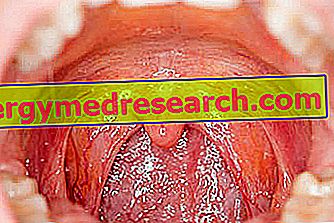The treatment of cellulite is a controversial topic that often generates small diatribes among sports technicians, food professionals, masseurs, pharmacists, plastic surgeons, beauticians etc. As often happens, the difference of opinion arises from the fact that nobody has the absolute truth about the best recipe for the treatment of cellulite in his pocket.

So let us first try to understand what cellulite is.
What is Cellulite?
The imperfection that is commonly called "cellulite" is the result of the circulatory alteration of the subcutaneous adipose tissue, that is the hypodermis. Since it is also a pathological alteration of the water-plasmatic exchange between the capillary vessels and the interstitial tissue, cellulite has been better referred to as edematous-fibro-sclerotic panniculopathy . Let it be clear to the readers that cellulite, in itself, does not represent a risk for the health of the organism, however its premature appearance, excessive or poorly localized, may indicate a clear symptom of homeostatic imbalance between the interstitial fluids of the hypodermis and blood plasma.
As anticipated, cellulite (as opposed to what certain TV commercials can mention) is usually NOT a pathological phenomenon, even if its presence may be related to the wearer's lifestyle (80-95% of women) and can improve (or worsen ) by changing eating habits and increasing physical activity. For the avoidance of doubt, I want to clarify that the margins of improvement of cellulite are often insignificant as well as inversely proportional to the subjective predisposition, while (rarely) it may happen that unruly and a little lazy girls draw enormous advantages by following a few food tips and moving more than the strictly necessary.
Cellulite mainly affects female subjects with gynoid (pear) conformation and is particularly localized in the areas of the hips and thighs. Cellulite is clearly visible in subjects with problems of overweight and obesity, but often does not spare even the "leanest".
The onset of cellulite is related to several pathogenetic or predisposing factors; the mechanism of onset of cellulite is due to the cytological structural alteration of fat (fat) cells, which break free of triglycerides and cytoplasmic solutes, increasing the osmolarity of the surrounding fluids; this determines the recall of liquids from the capillary plasma and the histological deformation of the adipose support lattice. Obviously, some systemic diseases and the collateral action of different drug therapies participate in the formation of cellulite.
We often wonder why cellulite gets worse over the years; the answers are basically 3:
- Cellulite is generated (probably) by the alteration of the microcirculation which tends to worsen over the years
- Cellulite is a perpetual degenerative process that gets worse and worse; the release of solutes and triglycerides in the interstitial tissue contributes to the continuous recall of water and the release of some inflammatory mediators (with edematous effect)
- The advancement of age usually tends to worsen the subjects' lifestyle
Cure Cellulite?
What can we do to try to improve this blemish?
I do not pronounce on the efficacy or otherwise of ointments, creams and anti-cellulite drugs, as I am not a pharmacologist and far from me the idea of being able to express a reliable opinion on the matter. Instead, I make an observation on lymph drainage manipulations, probably useful for the MOMENTANEA reduction of the imperfection in question: should it really be time and money to spend on treatments that will never allow a definitive regression of cellulite? I say no. On the contrary, much can be done with physical activity and nutrition.
The aerobic activity at medium and low intensity allows to effectively reactivate all the body circulation, therefore also that of the hypodermis; promotes sweating by facilitating the expulsion of toxins but above all sodium (Na) responsible for tissue water retention; moreover, it promotes the disposal of adipose triglycerides, therefore also those contained in the tissues affected by cellulite.
It is however very important not to "exceed" the volume of aerobic activity, as the organism subjected to a very prolonged stimulus reacts by secreting cortisol, the hormone mainly responsible for water retention; in order not to risk, running slowly or walking fast 40 '4 times a week should be more than enough. Obviously, these indications subordinate to personal tastes; the race can be replaced by swimming, canoeing, cycling, rowing, Nordic walking or other aerobic activities.
At the same time, the anaerobic activity of strength (body building for instance), induces large movements of blood outside and inside the affected muscles. This effect also involves the surrounding tissues and may seem counter-productive to an initial analysis; however, in my opinion, it is an excellent method of "washing" the interstices; all the solutes and triglycerides released by the cytolysis of cellulite thus have the possibility of being diluted, reabsorbed or otherwise metabolized. Furthermore, the increase in muscle building favors the maintenance of an active basal metabolism and an excellent muscle fitness.
To know more:
- Cellulite: what is the most suitable physical activity?
Finally, let's move on to the hard core of cellulite: nutrition. Eating and drinking properly is very important; First of all, it is advisable to eliminate all alcoholic beverages except (only if liked) of 1 (or better ½) glass of red wine per day. At the same time it is advisable to cure the hydration making sure to drink at least 2 or 3 liters of water per day (1-1.5ml per kcal consumed) and, being able to choose, use (except for special needs) a low residual or low mineral water. This is because the poor body hydration greatly limits renal filtration favoring the stagnation of blood solutes (including unwanted toxins and molecules) and interstitial fluids. It is also FUNDAMENTAL to limit food sodium, both the ADDED one and that contained in preserved foods (sausages and salted meats, legumes and vegetables in brine, canned tuna, etc.); this makes it possible to limit the increase in blood osmolarity and interstitial osmolarity. Not only that, many professionals advise limiting the acidification of the blood by preferring alkalizing foods, although I honestly do not believe that this can have a significant effect, as our body (physiologically) is perfectly capable of buffering changes in blood pH. Last but not least, the balance of introduced macronutrients; it is fundamental to correctly make lipids, glucides and proteins, but above all, it is better to avoid raising the blood sugar beyond the norm. This phenomenon, induced above all by excessive portions of refined foods with predominantly carbohydrate content, causes an increase in postprandial blood osmolarity and strongly stimulates insulin. Excessive stimulation of this anabolic hormone (especially at inappropriate times) promotes the deposition of energy molecules in the tissues favoring water retention; however, this is a transitory phenomenon that, if not repeated and continued, tends to rebalance itself independently.
To know more:
- Diet and Cellulite
- Anticellulite Diet Example
Treating cellulite is a very difficult procedure that often does not provide the desired results; guaranteeing a correct diet associated with the right physical and motor activity is the only truly effective and economical basic therapy for the prevention and improvement of edematofibrosclerotic panniculopathy .



